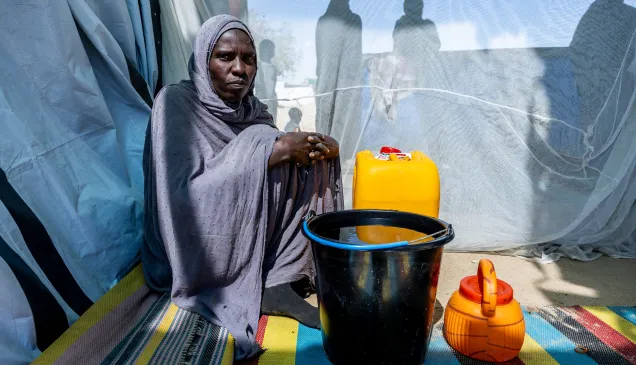27th session, Human Rights Council
Statement at the Human Rights Council on 22 September 2014
Panel discussion on "Ensuring use of remotely piloted aircraft or armed drones in counterterrorism and military operations in accordance with international law, including international human rights and humanitarian law"
The International Committee of the Red Cross (ICRC) has been following closely and contributing to ongoing debates among experts on the humanitarian consequences and legal issues raised by the use of armed drones. This panel is one such forum for debate. We would like to take this opportunity to outline a few legal issues concerning the use of armed drones in situations of conflict governed by international humanitarian law (IHL).
IHL regulates two types of armed conflict. International armed conflicts are essentially those opposing two or more States. Non-international armed conflicts, which are prevalent today, are between a State (or States) and one or more organized non-State armed groups, or between such groups. The criteria for determining the existence of a non-international armed conflict are twofold: the requisite degree of organization of the non-State group and a certain intensity of violence. Thus, whenever the use of armed drones under IHL is being assessed, a careful evaluation should be undertaken in order to establish whether or not a particular situation of violence constitutes an armed conflict, and if so, of what type.
The applicability of IHL is a factual matter and does not depend on a declaration or recognition of the existence of an armed conflict by one or all of the parties. In practice, however, States have sometimes denied that IHL applies to a situation that may be said to amount to an armed conflict, while on other occasions they have, conversely, extended the applicability of IHL to situations that do not fit the legal description of an armed conflict. Many questions related to the applicability of IHL to drone strikes could be more easily resolved if the classification of situations of violence were carried out with a focus on the existing legal criteria (as recognized in particular in the case law of the international tribunals).
A question that was initially asked with respect to armed drones, which are a relatively new technological development, is whether their use is lawful under IHL. We concur with both of the Special Rapporteurs on the panel, who indicated in their 2013 reports to the United Nations General Assembly that armed drones per se are not prohibited by IHL (See UN documents A/68/382, para. 13, and A/68/389, para. 77). There are also no inherent features of drones that would prevent their operators from observing the relevant rules of this body of law.
In a situation of armed conflict, whether international or non-international, the relevant rules of IHL are those on the conduct of hostilities, particularly the principles of distinction, proportionality and precautions in attack. A basic principle of IHL is that the parties to an armed conflict must at all times distinguish between civilians and civilian objects on the one hand, and combatants and military objectives on the other, and that attacks may only be directed against combatants and military objectives. When it comes to targeting persons, in particular in non-international armed conflict, identifying who is deemed to be a lawful target is the subject of much debate. The ICRC's view was set out in its 2009 Interpretive guidance on the notion of direct participation in hostilities under international humanitarian law.
The principle of proportionality in attack is another key IHL prescription that governs the conduct of hostilities. It prohibits attacks against military objectives that may be expected to cause incidental death or injury to civilians or damage to civilian objects, or a combination thereof, which would be excessive in relation to the concrete and direct military advantage anticipated. This principle aims to limit incidental ("collateral") harm to civilians and civilian objects. IHL also requires that each party to an armed conflict take all feasible precautions in the choice of means and methods of warfare with a view to avoiding, and in any event to minimizing, incidental loss of civilian life, injury to civilians and damage to civilian objects. This can entail restrictions on the timing or location of an attack, and the taking of other measures aimed at avoiding or minimizing civilian losses or damage.
The ICRC is closely following discussions about the application of the principles set out above, and welcomes efforts aimed at further strengthening their practical implementation.
In practice, many legal questions surrounding drone strikes have arisen when a person participates directly in hostilities from the territory of a non-belligerent State, or moves into such territory after taking part in an ongoing armed conflict. The issue is whether lethal force may be lawfully used against such a person and under what legal framework. As is well known, opinions differ. The ICRC is of the view that in this particular scenario IHL would not be applicable, meaning that such an individual should not be considered a lawful target under IHL. Advising otherwise would mean that the whole world is potentially a battlefield and that a person moving around the globe could be lawfully targeted under IHL in the territories of States not party to any armed conflict. In the ICRC's view, other legal frameworks would govern this particular scenario, in particular international human rights law and domestic law, in which law-enforcement standards impose strict limits on the use of force.
It should be emphasized that IHL rules governing accountability for grave breaches of the Geneva Conventions and Additional Protocol I in international armed conflict and for war crimes committed in non-international armed conflict fully apply to drone strikes carried out in a situation of armed conflict. States therefore have a duty to investigate and prosecute individuals suspected of having committed or having ordered to be committed grave breaches, regardless of where the offence was committed and the nationality of the perpetrators or the victims. In all other situations, States must at least investigate and prosecute war crimes committed either by their nationals, or on their territory, or crimes over which they otherwise have jurisdiction. There is no doubt that more should be done by States, individually and collectively, to ensure that the relevant IHL obligations are implemented, including when armed drones are used.



